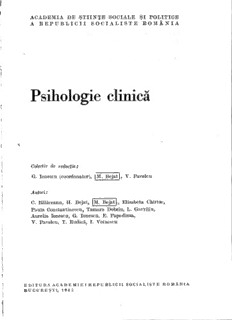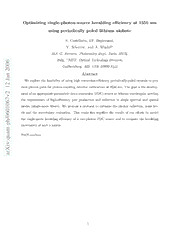
Lake Verevi, Estonia — A Highly Stratified Hypertrophic Lake PDF
Preview Lake Verevi, Estonia — A Highly Stratified Hypertrophic Lake
Lake Verevi, Estonia – A Highly Stratified Hypertrophic Lake Developments in Hydrobiology 182 Series editor K. Martens Lake Verevi, Estonia – A Highly Stratified Hypertrophic Lake Edited by Ingmar Ott & Toomas Ko˜iv EstonianAgriculturalUniversity,Estonia 123 LibraryofCongressCataloging-in-PublicationData AC.I.P.CataloguerecordforthisbookisavailablefromtheLibraryofCongress. ISBN-101-4020-4021-0 ISBN-13978-1-4020-4021-4 PublishedbySpringer, P.O.Box17,3300AADordrecht,TheNetherlands Coverillustration:SouthernpartofLakeVereviinMay2005.PhotoI.Ott Printedonacid-freepaper AllRightsreserved (cid:1)2005Springer Nopartofthismaterialprotectedbythiscopyrightnoticemaybereproducedorutilizedinanyform orbyanymeans,electronicormechanical,includingphotocopying,recordingorbyanyinformation storageandretrievalsystem,withoutwrittenpermissionfromthecopyrightowner. PrintedintheNetherlands TABLE OF CONTENTS Preface vii General description of partly meromictic hypertrophic Lake Verevi, its ecological status, changes during the past eight decades, and restoration problems I. Ott, T. Ko˜iv, P. No˜ges, A. Kisand, A. Ja¨rvalt, E. Kirt 1–20 Water and nutrient mass balance of the partly meromictic temperate Lake Verevi P. No˜ges 21–31 DistributionofsedimentphosphorusfractionsinhypertrophicstronglystratifiedLake Verevi A. Kisand 33–39 Optical properties and light climate in Lake Verevi A. Reinart, H. Arst, D.C. Pierson 41–49 Sedimentation rate of seston during the formation of temperature stratification after ice break-up in the partly meromictic Lake Verevi I. Ott, A. Rakko, D. Sarik, P. No˜ges, K. Ott 51–61 Nitrogen dynamics in the steeply stratified, temperate Lake Verevi, Estonia I. To˜nno, K. Ott, T. No˜ges 63–71 The formation and dynamics of deep bacteriochlorophyll maximum in the temperate and partly meromictic Lake Verevi T. No˜ges, I. Solovjova 73–81 Bacterioplankton abundance and activity in a small hypertrophic stratified lake H. Tammert, V. Kisand,T. No˜ges 83–90 Long-term changes and seasonal development of phytoplankton in a strongly stratified, hypertrophic lake K. Kangro, R. Laugaste, P. No˜ges, I. Ott 91–103 Primary production of phytoplankton in a strongly stratified temperate lake T. No˜ges, K. Kangro 105–122 Resource ratios and phytoplankton species composition in a strongly stratified lake T. Ko˜iv, K. Kangro 123–135 The composition and densityofepiphyton onsomemacrophyte species inthe partly meromictic Lake Verevi R. Laugaste, M. Reunanen 137–150 Vertical distribution of zooplankton in a strongly stratified hypertrophic lake K. Ku¨bar, H. Agasild, T. Virro, I. Ott 151–162 Vertical and seasonal dynamics of planktonic ciliates in a strongly stratified hypertrophic lake P. Zingel 163–174 vvii Long- and short-term changes of the macrophyte vegetation in strongly stratified hypertrophic Lake Verevi H. Ma¨emets, L. Freiberg 175–184 Macrozoobenthos of Lake Verevi H. Timm, T. Mo¨ls 185–195 Diel migration and spatial distribution of fish in a small stratified lake A. Ja¨rvalt, T. Krause, A. Palm 196–203 Hydrobiologia(2005)547:vii (cid:1)Springer2005 I.Ott&T.Ko˜iv(eds),LakeVerevi,Estonia–AHighlyStratifiedHypertrophicLake DOI10.1007/s10750-005-4137-y Preface Ingmar Ott Estonia is the fourth country in Europe by pro- mass ever recorded in Estonia – 724 g m)3 wet portional area of lakes (4.8%). The main part of weight.Since1984thelakewasinvestigatedyearly this area belongs to the lakes of Peipsi and except 1987 and 1992. In the 1980s, phenomena Vo˜rtsja¨rv. The numerous others are small and connected with hypertrophic conditions prevailed shallow, devoid of any special economic value. in each year. After that period, the lake became Lakes in the urban areas are used mostly for rec- really unstable, with alternating communities and reation. They are attractive also to limnologists. ecological status in different years. The water col- Lake Verevi (surface 12.6 ha, maximum depth umn attained a mosaic character with narrow 11.0 m) is located in the small town of Elva (6400 spatialmicrohabitats.Thesefindingsledtoanidea inhabitants).Tartu,thesecondcityinEstonia,lies tostudythefunctioningofthewholeecosystemin atadistanceof25 km.Therelativelyrecentsettle- more detail. The most profound seasonal studies ment (ca 115 years) is suitable for leisure with a took place in 2000 and 2001, with 25 researchers hilly pine forest and several small lakes. Small participating; a partly meromictic status of the wooden private houses and summer cottages lakewasdiscovered.Themostresultsareincluded without special industry are dominant. Elva has in the present volume, while some autecological been attractive for tourists and holidaymakers studies including those on diurnal migration are during its whole existence. The first swimming still awaiting publication. All the members are pool and a beach hall, one of the best atthat time ready to cooperate with Estonian and foreign in Estonia, were built already in 1929. colleagues in more detailed investigations and Prof. H. Riikoja, the founder of Estonian lim- experiments offered by the environment of this nology, performed a survey of Estonian lakes in peculiar lake ecosystem. thefirsthalfofthe20thcentury,includingastudy The publication was made possible by several of Lake Verevi in 1929. This time the lake was in financial supporters – Estonian Science Founda- its natural state with good ecological quality. The tion (G No. 3579, 4835, 5738, 3689, 4080, 1804, same was noticed in the 1950s during the complex 4483),EstonianMinistryofEducationandScience investigation led by the next grand Estonian lim- (core grant Nos. 0370208s98, 0362482s03 and nologist, N. Mikelsaar. Alarming appearances of 0362480s03), M. & T. Nessling Foundation (G deteriorationofthelakehadbeennoticedsincethe No. 99084). 1970s. All phenomena connected with rapid eutrophication have been revealed, among these one of the highest values of phytoplankton bio- Vo˜rtsja¨rv Limnological Station, 27 July 2004 Hydrobiologia(2005)547:1–20 (cid:1)Springer2005 I.Ott&T.Ko˜iv(eds),LakeVerevi,Estonia–AHighlyStratifiedHypertrophicLake DOI10.1007/s10750-005-4138-x General description of partly meromictic hypertrophic Lake Verevi, its ecological status, changes during the past eight decades, and restoration problems Ingmar Ott1,*, Toomas Ko˜iv1, Peeter No˜ges1, Anu Kisand1, Ain Ja¨rvalt1 & Enno Kirt2 1Estonian Agricultural University, Institute ofZoology andBotany, Vo˜rtsja¨rvLimnological Station, 61101 Rannu, Tartu County,Estonia 2OU¨ Enno ProjektidLtd, ToomeStr. 82, 10913Tallinn,Estonia (*Author forcorrespondence: E-mail: iott@zbi.ee) Key words: long-term ecosystem changes, ecological status, vertical distribution of substances and biota, lake restoration Abstract The present study describes generally the ecosystem of Lake Verevi while more detailed approaches are presentedinthesameissue.Themaintaskofthearticleistoestimatelong-termchangesandfindthebest method for the restoration of good ecological status. Lake Verevi (surface 12.6 ha, mean depth 3.6 m, maximumdepth11 m,drainagearea1.1 km2,waterexchange0.63-timesperyear)isahypertrophichard- water lake located in town Elva (6400 inhabitants). Long-term complex limnological investigations have taken place since 1929.The lake has been contaminated by irregular dischargeof urban wastewaters from oxidationpondssince1978,floodfromstreets,andinfiltratedwatersfromthesurroundingfarms.Theso- calledspring meromixisoccurredduetoextremelywarmspringsinrecentyears.Theindexvalue ofbuffer capacity of Lake Verevi calculated from natural conditions is on the medium level. Water properties were analysed according to the requirements of the EU Water Framework Directive. According to the classi- fication, water quality as a long-term average of surface layers is moderate-good, but the water quality of bottomlayersisbad.Valuesindeeperlayersusuallyexceed20–30timesthecalculated referencevaluesby Vighi and Chiaudani(cid:1)s model. Naturally, at the beginning of the 20th century the limnological type of the lake was moderately eutrophic. During the 1980s and 1990s the ecosystem was out of balance by abiotic characteristicsaswellasbyplanktonindicators.Rapidfluctuationsofspeciescompositionandabundance can be found in recent years. Seasonal variations are considerable and species composition differs remarkablyalsointhewatercolumn.Thedominatingmacrophytespeciesvaryfromyeartoyear.Sincethe annual amount of precipitation from the atmosphere onto the lake surface is several times higher, the impact of swimmers could be considered irrelevant. Some restoration methods were discussed. The first step, stopping external pollution, was completed by damming the inlet. Drainage (siphoning) of the hyp- olimneticwaterisdiscussed.Secondarypollutionoccurs because Fe:P valuesarebelow thethreshold.The authors propose to use phosphorus precipitation and hypolimnetic aeration instead of siphoning. Introduction issueasearlyasinthestudybyHutchinson(1938). The investigation of vertical distribution of biota Physically and chemically stratified lakes have a developed from the descriptive stage through the special ecosystem structure. Vertical gradients of investigation of ecological processes into a stage environmental parameters became a limnological dealing with the ecological holistic approach to 2 lake management (Ripl, 1976; Faafeng & Nilssen, pine forests. The densely populated eastern shore 1981; Wolter, 1994; Lindenschmidt & Chorus, slopessteeplytowardsthelake.Theareatothewest 1997).Refiningandpredictionoffunctioningofan iswetlandandcoveredbyquagmiresandswamps. ecosystem and the ecological status of stratified Lake Verevi is a small and relatively deep lake lakes is complicated for many reasons. One of the (Table 1) with low water exchange (Loopmann, most important factors is the occurrence of many 1984).Thehighvalueofrelativedepth(theratioof microhabitats for biota and their irregular inter- maximum depth as a percentage of the mean actions. Sometimes complexity of investigation diameter of the lake on the surface; Wetzel, 1983) seems unrealistic and smaller compartments need supports the idea that the water column does not to be used (Pipp & Rott, 1995). Long-term data mix easily. The lake is thermally sharply stratified sets (since 1929) and the availability of complex and strong gradients of chemical substances occur datawithreferencestotheotherarticlesaboutthe duringsummer.Usually,thelakeisdimictic,water same issue (hydrochemical and hydrophysical, mixing in spring has been incomplete in recent sediments, bacterioplankton, phytoplankton, pro- yearsevenathomothermalconditions,whichadds tozoa, metazooplankton, epiphyton, meio- and some temporal meromictic features to the lake macrozoobenthos, macrophytes, fishes) serve as (No˜ges & Kangro, 2005; Ott et al., 2005). The the basis of this study. The influence of wind and metalimnion is progressively eroded during sum- also of inflow in recent years is minimal, although mer and autumn and a complete mixing usually usually core factors for the functioning of the takes place in November. The lake has up to 10 ecosystem. To some extent these conditions make small inflows, but only three of them (Fig. 1; it easier to predict the functioning of the whole inflows 1, 4, and 5) are nearly permanent. Inflows ecosystem. The present study describes generally 4and5startfromtwospring-fedlakelets,Linaja¨rv the ecosystem ofLake Verevi, while more detailed and Jaanija¨rv located in the northern part of the approaches are presented in the same issue. The watershed. The main part of the annual inflow main task of the article is to estimate long-term comes irregularly from inlet 10, which has been changes and to find the best method for restora- closedtotallysince2002.LakeVerevireceivesalso tion. a significant part of water as hardly measurable sub-surface run-off (Ma¨emets & Ennok, 1991). Small ditches and bottom springs in the narrow Site description northernpartformthebulkoftheinflowingwater. The lake has been contaminated by irregular dis- Lake Verevi is located in a small town of Elva chargeofurbanwastewatersfromoxidationponds (6400 inhabitants). Tartu, the second city in Es- since 1978, flood from streets, and infiltrated tonia, is at a distance of 25 km. The relatively watersfromthesurroundingfarms.Theoutflowof young town (ca. 115 years-old) is suitable for lei- the lake is located on the western shore (Fig. 1, N sure with a landscape of a hilly pine forest and 7),anditflowsintotheKavildarivervalley.Indry several small lakes. Small wooden private houses years,theoutflowbecomesdiscontinuous.Theice- and summer cottages without special industry free period lasts mainly between April and dominate.Elvahasbeenattractingfortouristsand November. holidaymakers. One of the best swimming pools and beach halls in Estonia was built here in 1929. The lake has an elongated shape in the north– Materials and methods south direction with the deepest and widest part nearthesouthernend(Fig. 1).ByoriginLakeVe- Lake Verevi has been studied extensively over a revi is a kettle lake formed by the melting of a longperiod,between1929and2001(in1929,1957, buried ice block from the decaying glacier 1984, 1985, 1986, 1988, 1989, 1991 and each year (Ma¨emets & Ennok, 1991). The drainage basin between 1993 and 2001). The first data are avail- represents a hydrologically complex landscape – able in the literature (Riikoja, 1930, 1940; Eesti from the south and the south-east the lake is Ja¨rved, 1968). Plankton and hydrochemical sam- surrounded by sandy hills and dunes covered with ples have been gathered mainly from the deepest 3 Figure1. LocationandmapofLakeVerevi.Numbers:1–6,8–10inlets,7outlet. point of the lake from 3 to 4 layers. The Ruttner placed vertically into the water. The lower tip of (volume 1 or 2 l) or the Van Dorn sampler (2 l) theverticallyplacedhosewasclosedandthewater were used. In 2000 and 2001 phytoplankton and was sucked through a horizontal tube in order to water samples were gathered from eight layers obtain water from the horizontal layers. The using aspecialvacuumprobe.AMasterflexpump capacity of the complex device is approximately (model N 7533–60) with an easy-load pump head 2 l min)1. Seasonal observations were carried out (model 7518–12) was used for pumping water to in 1988, 1991, 1993, 2000, and 2001; the other the surface. A hose with an inner Ø 8 mm was years in summer or during the vegetation period.
Description:The list of books you might like

The Strength In Our Scars

The Mountain Is You

Atomic Habits James Clear

The Spanish Love Deception
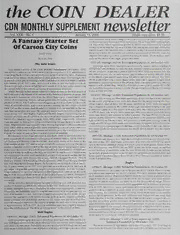
The Coin Dealer Newsletter Monthly Supplement Newsletter: 2006

Banda Larga no Brasil : passado, presente e futuro

NASA Technical Reports Server (NTRS) 20100017776: Results and Analysis from Space Suit Joint Torque Testing

Greek Government Gazette: Part 1, 2008 no. 31
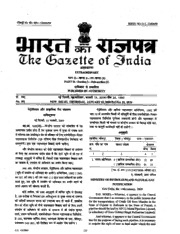
Extraordinary Gazette of India, 2009, No. 107
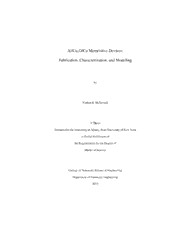
DTIC ADA567650: Al/CuxO/Cu Memristive Devices: Fabrication, Characterization, and Modeling
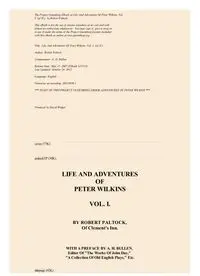
Life and Adventures of Peter Wilkins Vol I by Robert Paltock of Clements Inn
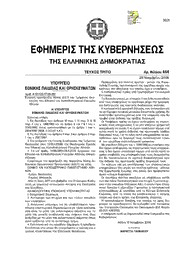
Greek Government Gazette: Part 3, 2006 no. 444
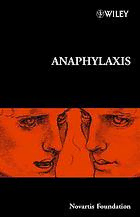
Anaphylaxis
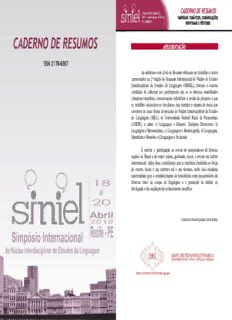
caderno de resumos caderno de resumos
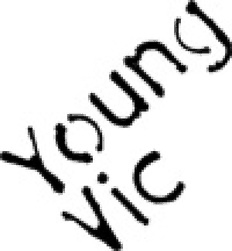
Sus
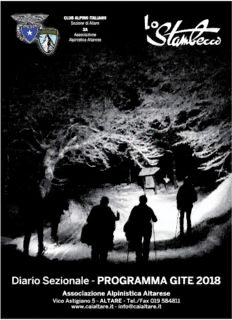
cai altare 2018 libretto

schylos by E H Plumptre
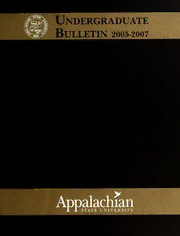
Bulletin, Undergraduate
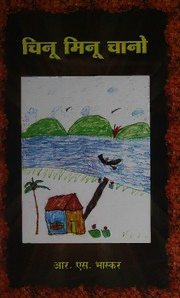
CHINU MINU CHANO
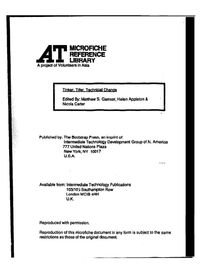
Tinker Tiller Technical Change From The People 1990

Song for a Whale
